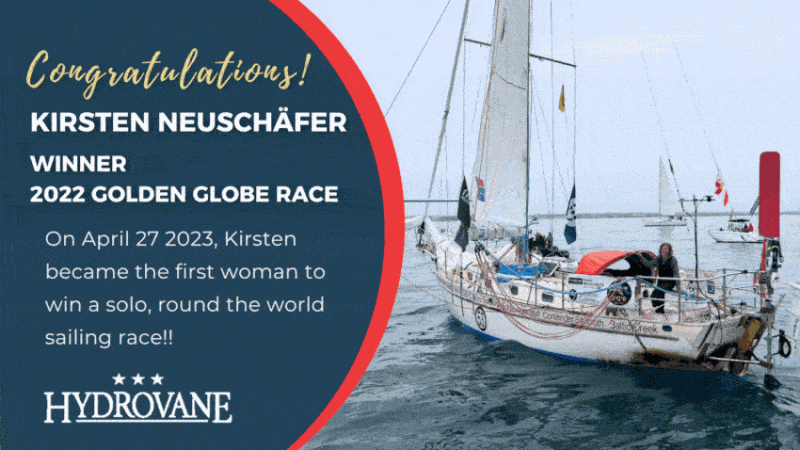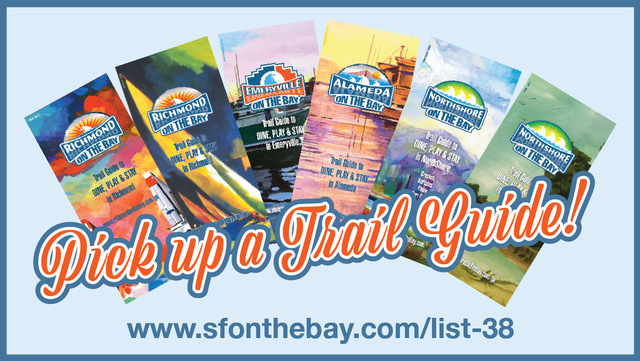
A Ha-Ha First as Fleet Watches Lightning Show
The 29th Baja Ha-Ha is well underway, with the fleet now coming to the end of Leg Two. After all the action of the Turtle Bay Beach Picnic, and the unfortunate boat sinking early Friday morning, we imagine the crews will be taking full advantage of today’s stop at Bahia Santa Maria. According to the Ha-Ha schedule, today is “a lazy lay-day meant for relaxing and exploring the Bay.” Although, before they even reached their destination, the fleet experienced more excitement, this time from the sky. The Poobah wrote on his Facebook page: “Bit o’ lightning last night as fleet approached Bahia Santa Maria. A Ha-Ha first.”
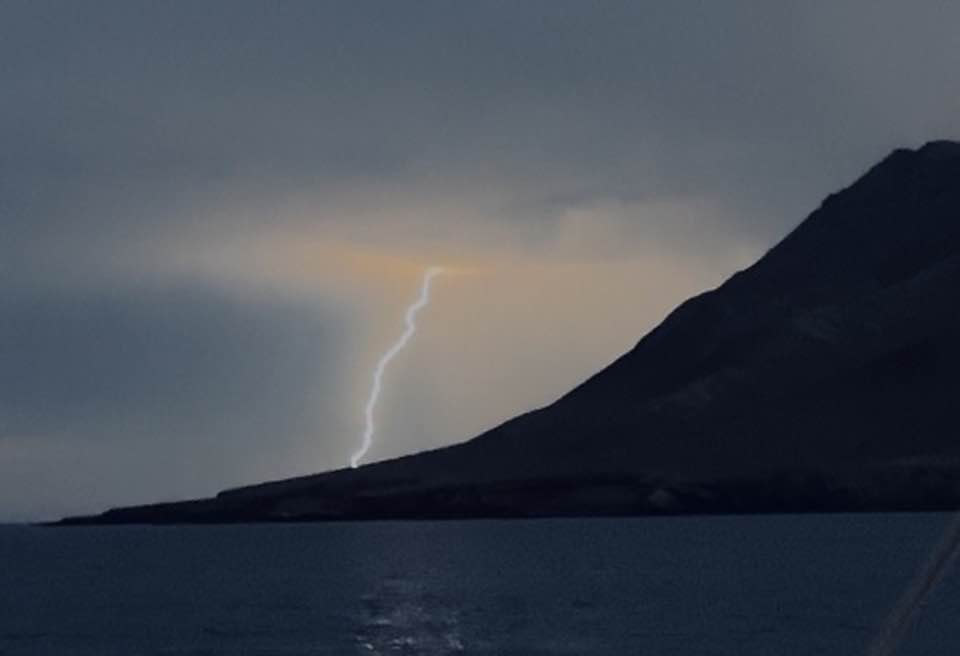
Not all the boats were in view of the lightning, and those that were kept an eye on their radars. Thankfully it was far enough in the distance and no damage has been reported. With that added to the events of Turtle Bay, a day of rest sounds welcoming. Plus, it’s a good plan ahead of tomorrow’s itinerary of “hiking, beach walking, sports, and the annual Rock ‘n’ Roll Beach Party.”
Profligate was among the first boats to arrive at today’s anchorage, and it didn’t take long for the crew to clean up and get into chill mode.
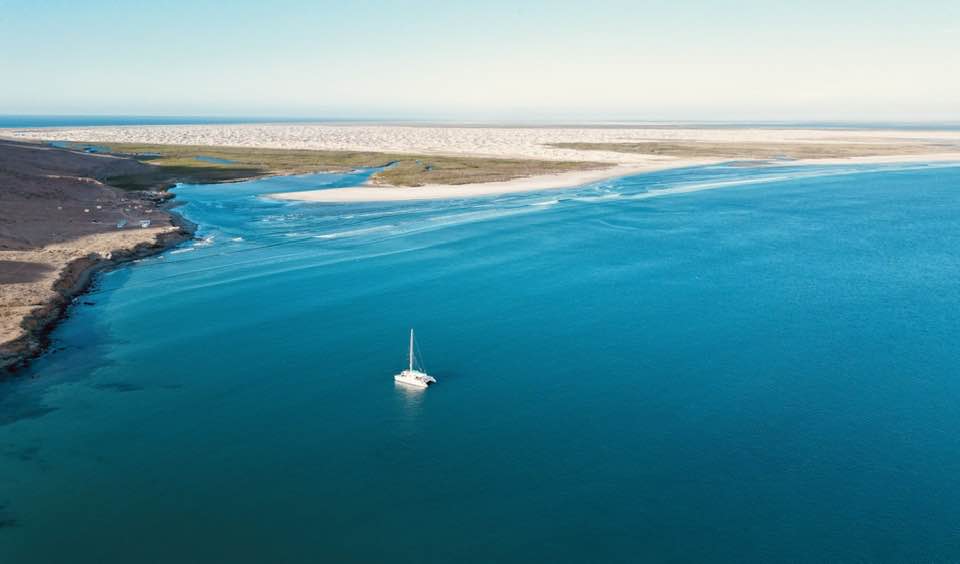
And if you were wondering what it’s like to be a part of the Baja Ha-Ha, sailing alongside all those boats moving in the same direction, this video is from the first three hours of the second leg.
Wednesday will be an early start. Anchors up at 7 a.m. for Leg Three to Cabo San Lucas.
Horsing Around in the Horse Latitudes
It’s the season for Northern Hemisphere sailors to sail south. When this photo arrived in our inbox, it reminded us that all those southbound sailors on the Baja Ha-Ha, and everywhere else, will be crossing the horse latitudes as they head for warmer weather. Bay Area sailor Ronnie Simpson crossed the horse latitudes a couple of days ago on his way around the world. He’s now at latitude 22 on the Global Solo Challenge as he holds the lead in his start-date fleet.
The horse latitudes lie at about 30 degrees north and south of the equator and are characterized by sunny skies, calm winds, and very little precipitation. It’s pleasant but not necessarily ideal for sailing, especially if you don’t have an auxiliary engine or aren’t allowed to use one because you’re racing.
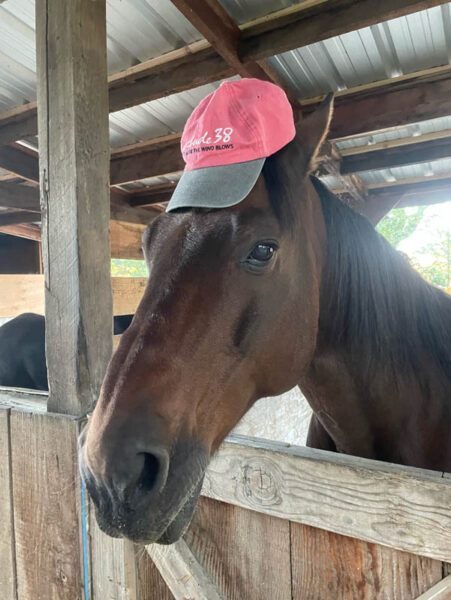
According to Wikipedia, the lore surrounding the naming of the horse latitudes has three popular explanations. The one we’ve heard most often is that when Spanish galleons were transporting horses to the New World (because there weren’t any horses in the Americas), they would sometimes get becalmed for long durations at 30 degrees north. As they ran low on supplies, they’d throw dead or dying horses overboard to conserve resources for the crew.
Alternatively, another legend states that seamen would create a straw-stuffed effigy of a horse and “beat a dead horse” as a ritual to celebrate the time they paid off debts incurred between paychecks on voyages. And finally, there is the thought that in both the northern and southern latitudes, a sailing ship could be becalmed but get “horsed” when it made progress by latching onto a favorable current in the horse latitudes.
We tip our hat to all three possible explanations and to all the sailors currently crossing the horse latitudes, which, on the West Coast, occur just south of Ensenada. Yes, that’s only eight degrees or 480 miles south of those of us on latitude 38. Weather patterns are also one of the reasons it’s so much more interesting to go south on a sailboat than on I-5.
This photo, submitted by Monique Selvester, and many more appear in October’s Sailagram photos submitted by our readers. If you have a photo to add for next month, send it to [email protected].
Steering the Dream With Hydrovane
Hydrovane is your best crew member: an independent self-steering windvane and emergency rudder/steering system … ready to go!
Should We All Be Worried About Spade Rudders?
Latitude 38 received a letter from Mike Latta discussing the pros and ominous cons of spade rudders. (This is not the first debate about the ubiquitous, convenient, but undeniably vulnerable piece of steerage, nor will it be the last.)
Reading about Lucky Dog’s dilemma in Latitude 38 brought up the core reason why she was almost abandoned in the first place: the loss of her spade rudder.
OK, this will rile most of the sailing community, but it’s time someone piped up about unsupported spade rudders. Yes, they’re cheaper to build and great for around-the-buoys racing. They’re faster, can turn on a dime, and maneuver easily in reverse. But when it comes to bluewater cruising, spade rudders (without a proper skeg) are devil spawn waiting for the next basking whale, log, or drifting ship container to ruin your day.
I say this from decades of deep-salt experience, much of it singlehanding my Falmouth Cutter 22 (sail# 001). So, I know there are going to be times when your best attempt at deck watch is often less than adequate. Crewed or not. Day or night. Fair or foul.
Shit happens.
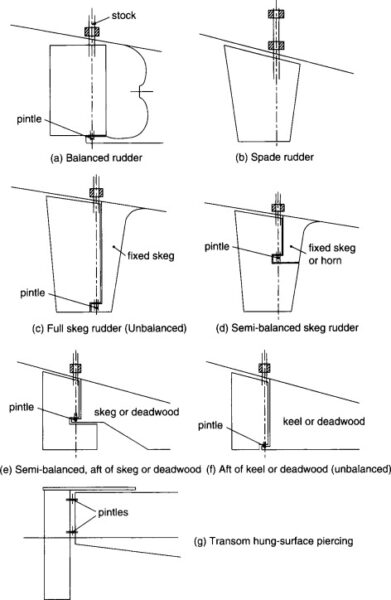
It’s bad enough that a typical fin-keel, spade-rudder hull aperture has minimal protection to keep the now fully exposed prop from getting ensnarled in fishing lines and nets. I would imagine many of these skippers eventually become fairly adept at clearing this particular problem.
Though at night in a seaway, watch out.
Propeller snarls are one thing, however. When a multi-ton boat slams into one of the above-mentioned multi-ton floating objects, the spade rudder not only loses out, but often takes a big chunk of the fiberglass bottom with it.
I spent a dozen years wandering the Sea of Cortez and Mexican Riviera and heard of two near-sinkings from fully crewed boats hitting whales minding their own business. And both yachts had spade rudders.
All my boats, starting with a wood Tahiti ketch, have been full-keeled, barn-door-rudder cruisers designed by the likes of Atkins, Alberg, and Hess. I might have reached Hiva Oa a few days later than some back in ’84, but who cares? We got there without a qualm in our wooden Atkins sloop despite having to trail warps for a night and day during Hurricane Simon along the way. Ultimately, it was a fabulous and safe crossing. A great experience. However, I wouldn’t have dared do it aboard today’s typical fin-keeled, spade-rudder boat.
I’d be interested if anyone has researched this conundrum. Or is this just my experience?
Please comment below, or write us here.
San Diego Connects Sailors to the Sea
San Diego sailors have it good. Last Monday’s magnificent start to the Baja Ha-Ha was just a taste of what’s to love about the San Diego sailing community. We were quickly spoiled by three days of warm, sunny breezes accompanied by the Sunday Baja Ha-Ha kick-off party, the Monday start of the rally, and a Tuesday tour of friends on the waterfront. It was a sailing, chamber-of-commerce display of welcoming hospitality. We posted the story of the start last week and now have a few photos from the landside tour.
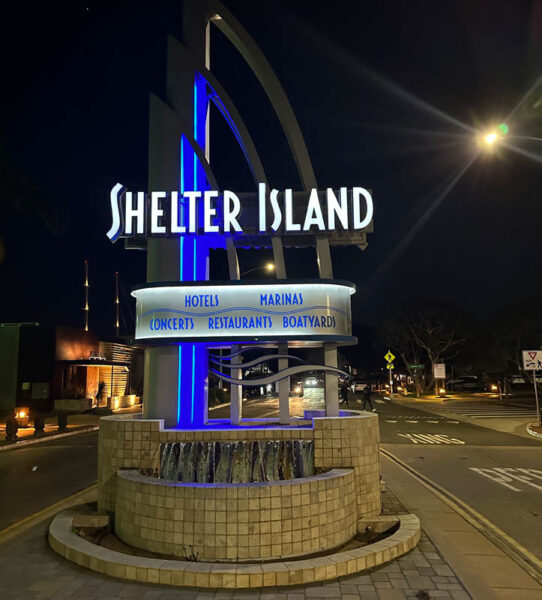
As in all big cities, there are many neighborhoods, most of which we don’t explore. There’s too much to see and do along the waterfront. The bad news for boaters, and good news for marina operators, is that most of the marinas are full with wailing (waiting) lists. You can find spots, but it’s not easy. Driving onto Shelter Island past the sculpture and water fountain leaves no doubt that you’re entering sailing territory. Boatyards, yacht brokers, sailmakers, chandlers, canvas shops, marinas and numerous other marine businesses are clustered along this busy marine hub.

Just off the island are many more marine businesses, eateries and places to pick up Latitude 38. We stopped by Downwind Marine, which had its last few copies of the October issue while awaiting the November issue. We had breakfast at the always-good Jennings House on Rosecrans, where owner Cathy showed us one of the last three copies she had out for patrons. It was somewhere around here that in 1834, Richard Henry Dana and crew dragged cowhides ashore from the Pilgrim as told in his book Two Years Before the Mast.

Walking the waterfront, we found many more details, including the castings on the curb above and our visit to San Diego Marine Exchange, where they were all out of the October issue, so we had to hand them a few from our morning “paper route” to take this photo. They also were open at 7 a.m. so we could get air horns for the Monday Ha-Ha start.

Just down the waterfront from Shelter Island is the major hub of San Diego sailing, the San Diego Yacht Club. On Sunday evening they were celebrating a successful, third-in-a-row win in the Lipton Cup, against eleven other clubs racing in J/105s. It was skipper Tyler Sinks’ sixth victory at the helm. Full results here. The entryway to the club is marked by the sculpture below of a young sailor on a Sabot. You couldn’t get a better start to a sailing life.

Down the waterfront, on the way to the city center, you come to Harbor Island, which is also a very short hop and skip from the airport. We boarded our Baja Ha-Ha committee boat from Harbor Island, where West Coast Multihulls hosted us from their Safe Harbor Sunroad base aboard their Bali 4.3 catamaran. We also stopped by to see Eric Leslie at Harbor Island West and grab an iced tea at the deli, where they also distribute Latitude 38.

We’ll have some more on the Lipton Cup and the San Diego waterfront in an upcoming newsletter. It’s always a pleasure to visit and always 10 degrees warmer! If you’re headed to Mexico behind the Baja Ha-Ha and looking for a place to do some last-minute outfitting or to pick up a copy of the latest Latitude 38, do not sail right by San Diego. You can find the businesses that can help and also give you a Latitude 38 in San Diego right here (no uploading, downloading, synching required).

